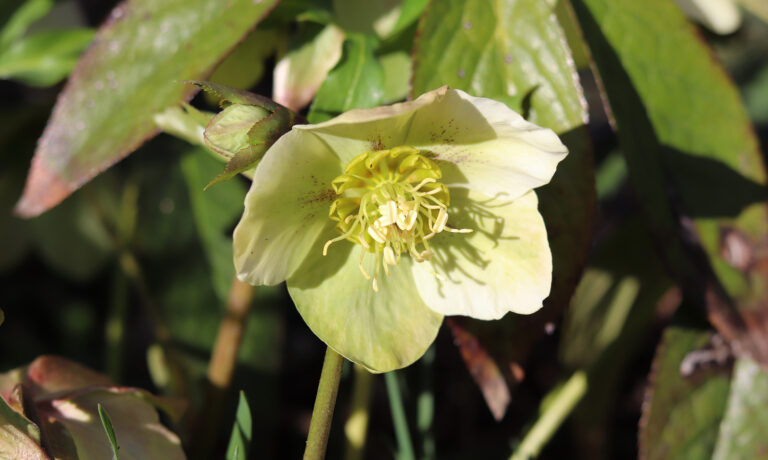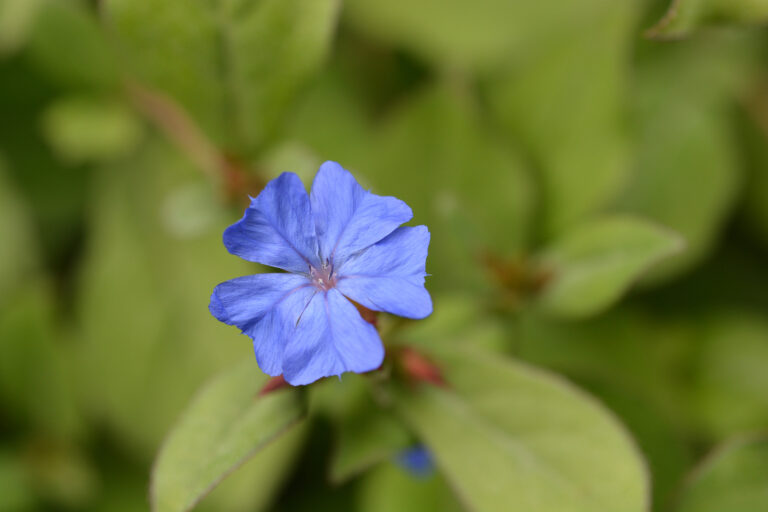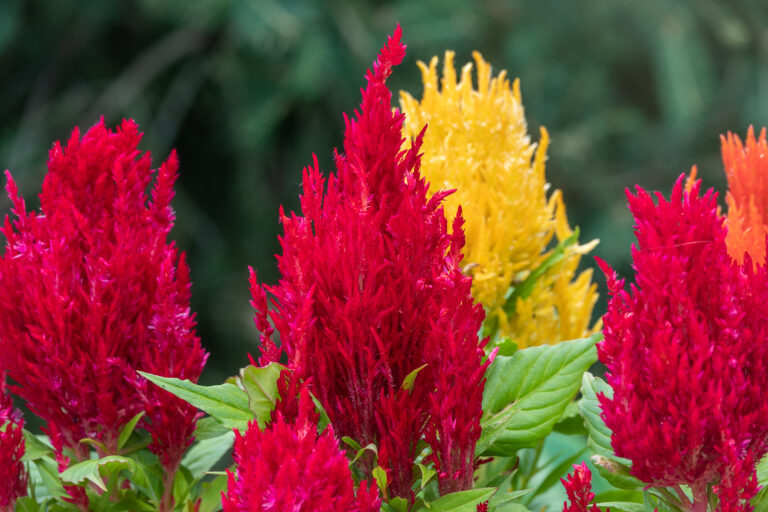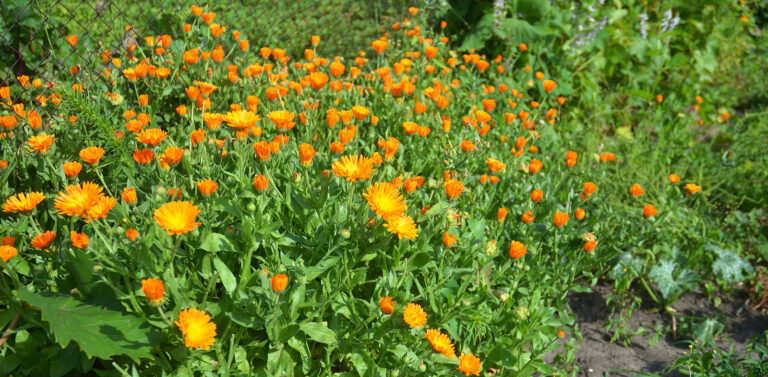How to Grow Hesperis – Sweet Rocket
Hesperis, also known as sweet rocket or dame’s rocket or dame’s violet, is a beautiful, low-maintance flowering perennial that is relatively easy to grow. Hesperis adds beautiful color and fragrance to the garden.
Hesperis plants typically grow to about 2 to 3 feet tall and produce clusters of delicate, four-petaled flowers in shades of purple, pink, or white. The flowers have a sweet, fragrant scent that is particularly strong in the evening, attracting pollinators such as moths. Hesperis leaves are lance-shaped and arranged alternately along the stem.
Hesperis prefers full sun to partial shade and well-drained soil. It is a hardy plant that can withstand a range of temperatures and soil conditions. Hesperis is a colorful addition to cottage garden and wild gardens.
Hesperis is known to have medicinal properties and has been used in traditional herbal medicine for various ailments. However, it is important to note that some parts of the plant may be toxic if ingested.
Hesperis is a member of the mustard family (Brassicaceae). It is native to Europe and Asia but has also been naturalized in North America.
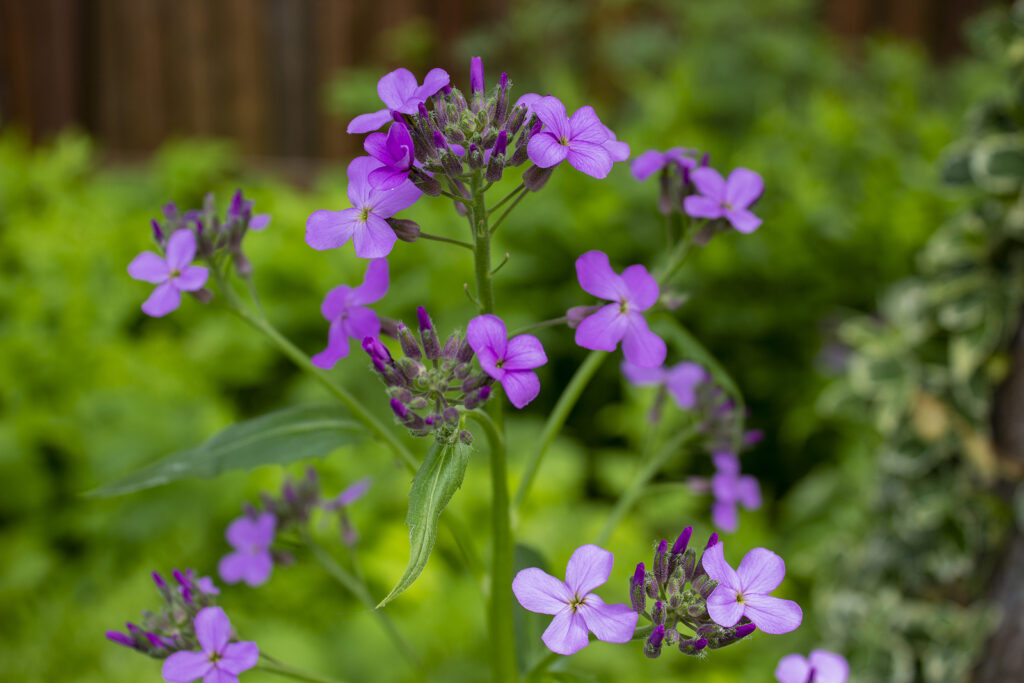
Get to know Hesperis – sweet rocket
- Plant type: Short-lived perennial, biennial
- Growing zones and range: Zones 4 to 9
- Hardiness: Will die back to ground in a freeze
- Height and width: 2 to 3 feet tall and wide
- Foliage: Toothed, ovate to oblong leaves
- Flowers: Loose clusters of 1.5 inch wide, four-petaled flowers in white or pinkish purple
- Bloom time: Late spring to mid-summer
- Uses: Cottage garden, wildflower gardens and other semiwild plantings
- Common name: Sweet rocket, dame’s rocket, dame’s violet
- Botanical name: Hesperis
- Family name: Brassicaceae
- Origin: Europe, Asia; naturalized in North America
Where to plant Hesperis – sweet rocket
- Plant Hesperis in a sunny or partially shaded spot in your garden with well-draining soil.
- Choose a location in your garden that receives at least 6-8 hours of sunlight per day.
- Hesperis can tolerate a wide range of soil types but prefers moist, fertile soil rich in organic matter.
When to plant Hesperis – sweet rocket
- Plant Hesperis seeds directly in the garden in early spring, late summer, or fall.
- Sow Hesperis seeds indoors in pots in early spring and transplant them later. Hesperis can be tempermental at transplanting.
Planting and spacing Hesperis – sweet rocket
- Scatter Hesperis seeds on the soil surface and lightly press them into the soil. Water the seeds well after planting. Plant the seeds about 1/4 inch deep and 12-18 inches apart.
- Sow Hesperis seeds directly into the garden, as they do not transplant well.
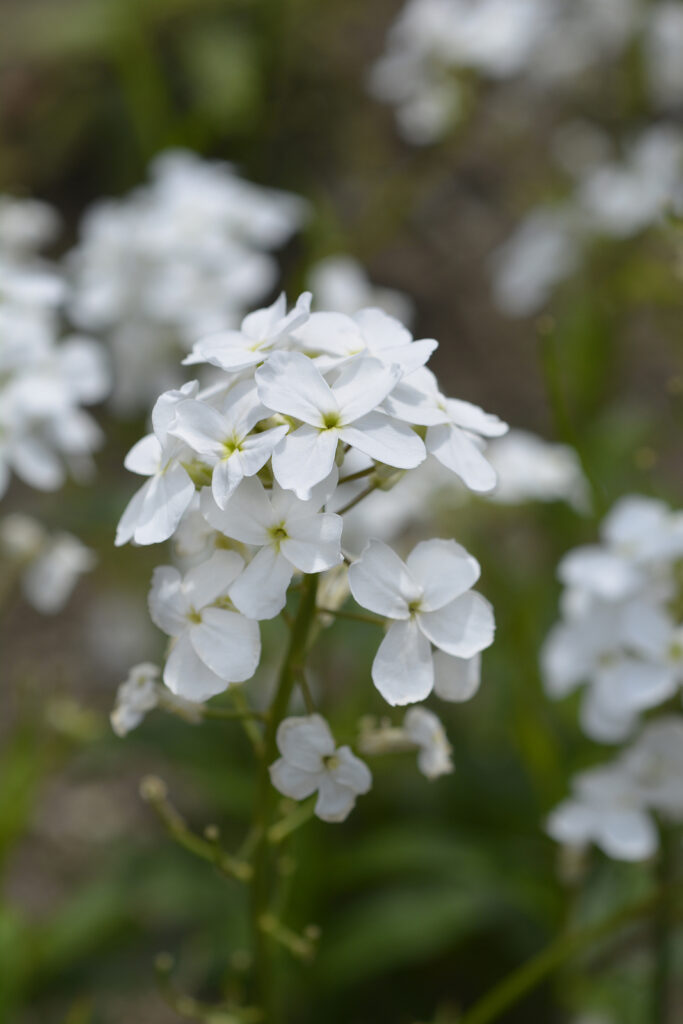
How to water and feed Hesperis – sweet rocket
- Early on Hesperis grows best in soil that is consistently moist but not waterlogged. Once established, hesperis is relatively drought-tolerant.
- Avoid overwatering, as Hesperis is susceptible to root rot.
- Hesperis does not require a lot of fertilizer. A balanced, all-purpose fertilizer can be applied in the spring to promote healthy growth.
- Add a balanced fertilizer to the soil before planting to provide some nutrients. You can also top dress with compost or organic matter during the growing season.
Hesperis – sweet rocket care
- Hesperis plants can grow up to 3 feet tall and will benefit from staking or support to prevent them from flopping over.
- Deadhead the spent Hesperis flowers regularly to encourage continuous blooming. Cut back the plant after the first flush of blooms to promote a second round of flowering and to prevent the plant from self-seeding. Hesperis blooms in late spring to early summer and has a sweet, fragrant scent.
- Cut back any leggy or overcrowded growth to maintain a compact and tidy appearance.
- Divide overcrowded clumps of Hesperis every few years in the fall to rejuvenate the plants and promote healthy growth.
- Replace Hesperis plants when they get old and woody.
- Mulch around the base of the plants to help retain moisture in the soil and suppress weeds. This will also help to keep the plant roots cool during hot weather.
Hesperis – sweet rocket pests and diseases
- Hesperis is generally resistant to pests and diseases. However, keep an eye out for aphids, slugs, and snails, and powdery mildew which can occasionally be a problem.
- Treat any infestations promptly with insecticidal soap or other organic remedies.
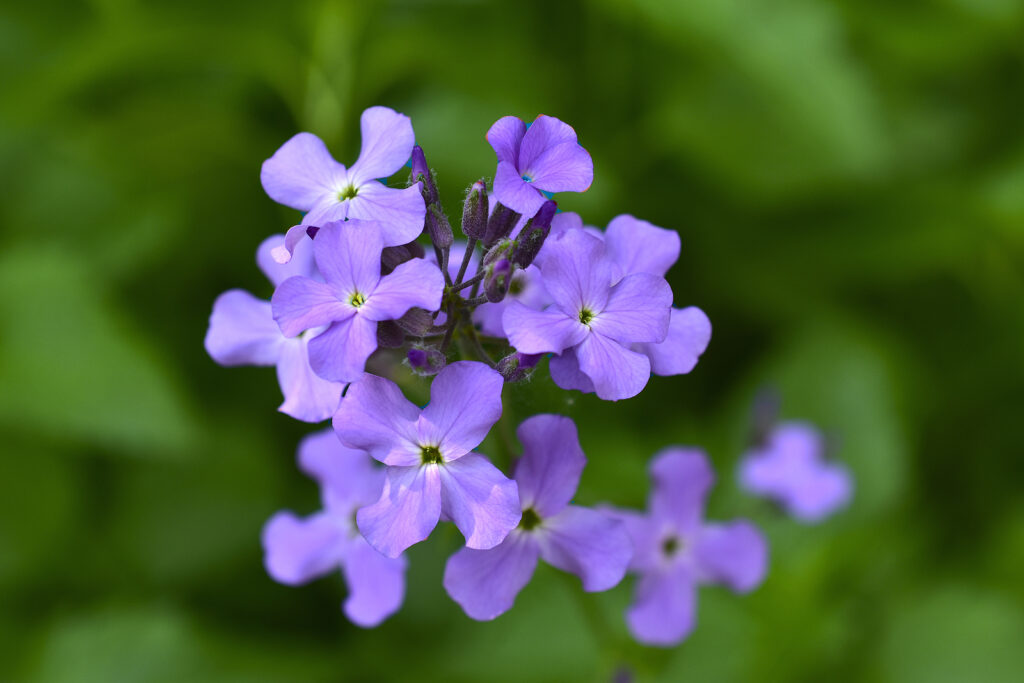
Hesperis – sweet rocket propagation
- Hesperis can be propagated by seed or division.
- Hesperis seeds can be collected and saved from mature plants for sowing the following year.
- Divide Hesperis clumps every few years to maintain vigor and prevent overcrowding.
Hesperis – sweet rocket varieties to grow
- Hesperis matronalis, commonly called dame’s rocket or sweet rocket, grows 24 to 36 inches tall; carries loose clusters of small four-petaled white or pinkish purple fowers; double-flowered forms exist; biennial.


